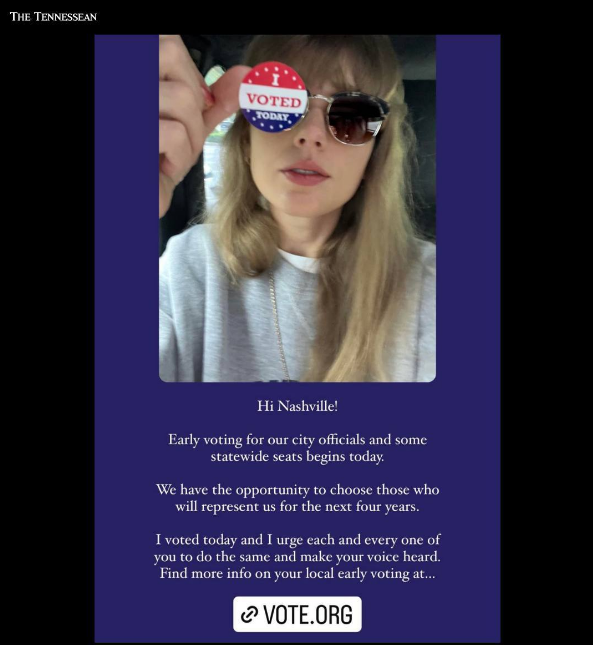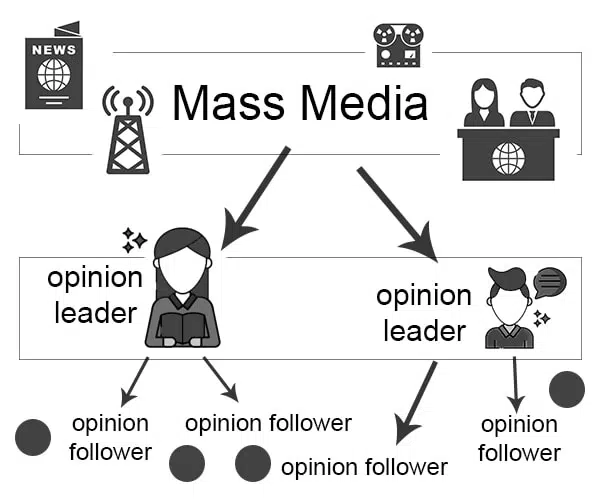In an age where we are constantly bombarded with media content, information spreads and influences individuals’ every move, from their views to consumerism. A theory that helps to explain the reasoning behind this is, the Two Step Flow Theory. It was developed in the early 40s by Paul Lazarsfeld and Elihu Katz, who are both prominent sociologists in the communications and media effects field. The early theory suggested that information from the media doesn’t directly influence the public, but instead reaches opinion leaders, who are actively more engaged with the media. These leaders then interpret the message and pass it to more passive members of society who don’t directly engage with media outlets. This theory remains highly relevant, especially on media platforms where influencers act as opinion leaders.
Paul Lazarsfeld formulated the Two-Step Flow theory in the 1940s. The original study, titled The People’s Choice, focused on the 1940s U.S presidential election, which occurred in Erie County, Ohio. The theory was developed after Lazarsfeld decided to focus on behaviour and the voting patterns of the people at the time. This study concluded the Two-Step Flow Theory and Lazarsfeld’s findings, which revolved around two key factors that explained how public opinions were shaped: Mass Media and Opinion leaders. His study showed that mass media didn’t directly influence individuals; instead, messages received from the media were immediately filtered by opinion leaders, who then passed down their interpretations and understanding to their wider social circle. This then influenced how others would perceive topics in the media. Lazarsfeld’s study depicts how individual understanding is not a direct result of media consumption but is constructed through the influence of socially active individuals.

In modern society, the Two-Step Flow Theory still applies today, because mass media still has a major influence on what individuals choose to consume and interpret within the media. A more common example of the theory in effect would be consumers consulting social media platforms, such as YouTube and TikTok, about products they may have an interest in. e.g. the latest iPhone. A more significant example of the theory in action would be Taylor Swift’s influence in politics and social activism. In September 2023, Taylor posted an Instagram story that encouraged people of voting age to vote. The site Vote.org later recorded 35,000 new registrations, which had been the most since 2020. The Taylor Swift example illustrates how people often receive and respond to media messages indirectly, through a trusted influential figure – rather than the original media source itself. Additionally, this demonstrates how opinion leaders are credible consumers and play a key role in shaping opinions.
Overall, the Two Step Flow Theory remains highly relevant in how we understand influence today. Even though the theory was developed in the 40s, it still applies in modern society, especially in the age of social media where highly influential people such as celebrities and influencers play a big role in moulding the opinions of others.
References:
Sullivan, B. (2023) ‘A Taylor Swift Instagram post helped drive a surge in voter registration’, NPR, 22 September. Available at: https://www.npr.org/2023/09/22/1201183160/taylor-swift-instagram-voter-registration (Accessed: 18th September )


This was a fascinating read! I think using Taylor Swift as an example of an opinion leader was a solid choice, as she doesn’t usually speak up about political issues. In this case, however, her willingness to speak out had a significant impact, motivating a considerable number of her fans and followers to participate in the election. I also liked how you touched on the fact that social media platforms contribute to consumerist culture (like the craze of buying the newest iPhone). By incorporating examples we see in everyday life, the theoretical concepts became much clearer to understand and connect with!
I enjoyed this! This is a really strong explanation of how the Two-Step Flow Theory still applies today. like how you connected the theory to modern examples like social media influencers and Taylor Swift’s political influence — that makes the concept feel very current and relevant. You’ve clearly shown how opinion leaders act as mediators between mass media and the public. Overall, this is a well-structured and insightful analysis that effectively bridges traditional media theory with today’s digital culture.
Hey,
Thank you for your blog post, I thought it was very well constructed and gave great insight on the Two Step Flow Theory. I absolutely agree with you on the relevance of this theory in contemporary media and culture. I find Lazarsfeld’s findings fascinating and especially applicable to modern day election campaigns. It seems that as consumers, we are under influence of those who have a greater platform or following than us. It is easy to get influenced by another persons opinion based on them having a certain virtual pedestal. Taking for example the hashtag (#ImWithHer) that was shared by dozens of celebrities online during the US election in 2016 when Hilary Clinton and Donald Trump were running for presidency. This hashtag circled around creating a mass trend where people would go vote and post on Twitter as a public sign of support of Hilary Clinton and advocate for others to do the same. Shakira tweeted “Choose hope. Choose hope. Choose HOPE. #imwithher” (Low, 2016). This is a perfect example of opinion leaders publicly influencing their audience to engage with a certain outcome. Inevitably seeing a celebrity that you personally admire or follow post something like this would have a certain influence on your voting. Whether this be voting in general or making a decision whom to vote for. I believe it is crucial for us as consumer to be aware of interpersonal influence we allow from celebrities or people with a platform despite whether we agree or disagree with their views.
Annabeth Leow. (2016). Celebrities take to social media to say #ImWithHer or just get out the vote. [Online]. The Straits Times. Last Updated: 09 November 2016. Available at: https://www.straitstimes.com/world/united-states/celebrities-take-to-social-media-to-say-imwithher-o [Accessed 27 October 2025].